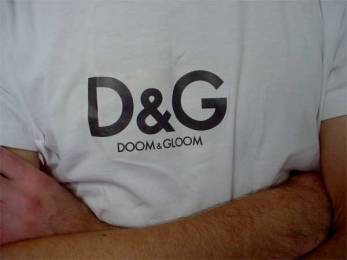
Retail, shopping & leisure
Reverse logistics
Once upon a time we bought stuff and then stored it away in the garage – or we threw it out. Consequently manufacturers and retailers didn’t worry too much what you did with their products once you’d bought them. Not any more. We are slowly moving from a permanent ‘acquisition culture’ to a temporary acquisition or ‘auction culture’ where people sell stuff the minute they get bored with it or when something better comes along. Blame eBay if you like. The site now has 150 million registered users globally and sells US $40 billion worth of unwanted ‘stuff’ every year. There is even a secondary market developing where companies such as Auction Drop sell things on eBay for you. More important, perhaps, is what this means for traditional distribution channels and logistics. The auction (second-hand) paradigm is not new of course – car companies have been selling used products to new owners for years – but it’s new for almost everyone else. But why get involved selling a product for a second time? One reason is control of the flow of products on to the second-hand market and specifically the pricing of old versus new products (eg, Callaway Golf’s recently launched a ‘pre-owned’ program) Another reason is that access to data about what people want – and what they don’t – can be used to influence new product development programs. And don’t forget about the packaging. As sustainability becomes more important, responsibility for disposing of packaging properly will shift away from the customer back to the retailer and the manufacturer.
Ref: Various including Optimizemag.com (US) January 2006, Issue 22, ‘Auctioning off the future of shopping’, D. Nissanoff. www.optimizemag.com See also ‘FutureShop: How the new auction culture will revolutionize the way we buy, sell and get the things we really want’, D. Nissanoff
Links: eBay, auctions, second hand, pre owned, re sale
Making a meal of it
Remember when you went to a restaurant to be served a meal? These days it seems we serve, and entertain, ourselves, thanks to the wireless pager that has invaded cafés, bars and restaurants over the past few years. When your order is ready, the pager
beeps/vibrates/flashes, alerting you that your food is ready for collection. This presumably saves time for the café/restaurant owner who can then devote resources to handing out pagers rather than dealing with customers. And if you get bored there’s a host of new pager innovations coming to a table near you soon too. These include pagers that display ads, tell the time or play games. Of course they could just take your phone number and call you but that would be too easy. Mind you, adding games means that more pagers will be stolen, which means more sales for pager makers.
Ref: The Australian (AUS) 18 October 2005, ‘Smart coasters liven up the wait for diners’. www.theaustralian.com.au
Links: service, customer service, remote service, technology
Shopping maps
Finding things to buy in cyberspace is easy but how do you find what you want in real life? Enter Google’s shopping maps, available on the Froogle shopping site. Simply type in what you’re looking for and where you live – or where you shop – and the site automatically pinpoints those retailers selling it. What’s more the map includes price differentials to help you work out whether it’s really worth going the extra mile to save the extra dollar. Now if someone could just make all this work on a mobile phone …
Ref: CNN (US) 22 November 2005, www.cnn.com.
Links: google, shopping, maps, information, internet
The rise of ‘shoppertainment’
What ever happened to shops with good old-fashioned service? These days shops are ‘flagships’ or ‘brand experience’ centres where how you buy is more important that what you buy. For example, Business Week recently included ‘emotional experiences’ in its list of best ideas for 2005. Apparently the new aim for retailers is to create ‘wonderful and emotional experiences for consumers around whatever is being sold’. This is rubbish. (Actually it’s common sense – but it’s rubbish to dress up common sense as something else.) There are two quite distinct types of shopping. The first is all about everyday basics and the objective is to get in and out as fast as possible without spending too much. No ‘experience’ needed here thanks. The second type of shopping is more emotional but even here the goal of building ‘passionate and loyal consumers’ is a bit of a stretch in many categories. Getting passionate about wine is one thing but how do you get passionate about petrol? This isn’t to say that store design isn’t important – it is – but it’s not the be-all-and-end-all. Moreover, ‘flagships’ are just that. Flagship stores are rarely rolled out because they usually lose money. Retailers would therefore be better off if they went back to basics and focused more on customer service across all their stores. In other words, the model for the future of shopping is the corner shop, not Niketown.
Ref: Various. See also Business Week (US) Best ideas of 2005: Shop ‘til you feel it’s a full-blown experience’. www.businessweek.com New York Times (US) 1 January 2006, ‘In Las Vegas, Shoppers are high rollers’, S. Horchow. www.nytimes.com
Links: shopping, retail, service, experiences, brands, loyalty
In praise of simplicity
Here’s an idea. In the US a store chain called Vino 100 does exactly what it says it does – it sells 100 wines. The wines are handpicked and all sell for under US $25 per bottle. That’s really all you need to know. The ‘experience’ stores (here we go again) offer in-store wine tasting (common sense) and feature ‘limited edition’ wines and easy to understand labels and point of sale. Not exactly rocket science is it?
Ref: Springwise.com (Neth) issue 27, January 2006, ‘Curated wining’, www.springwise.com Links: curated consumption, filtering edited choice.
Links: wine, simplicity
